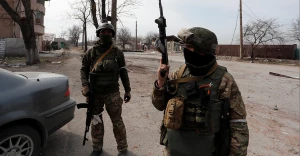
Russia shortens pause between missile strikes on Ukraine
Russian forces launched four missile attacks in early June 2024, signaling a potential shift to more frequent and intensified strikes against Ukraine
Oleksadr Kovalenko, a military and political observer with the Information Resistance group, shared his analysis on Obozrevatel.
According to Kovalenko, in the first half of June 2024, the occupying Russian forces have already conducted four missile attacks, which is a significant difference in frequency from the previous months.
The main strikes occurred on June 1st, 7th, 12th, and 14th. While in previous months there had been pauses of a week to a week and a half between attacks, in June the pauses shortened to 2-5 days.
In terms of the nomenclature of the means employed include:
- Kh-101/555/55 - 54 used, 46 shot down;
- Kh-47M2 Kynzhal - 2/1;
- 9M723 Iskander-M missile defense system - 10/0;
- 9M728 Iskander-K surface-to-air missile defense system - 5/3;
- Kalibr IRBMs - 10/4;
- Kh-59/69 - 6/3;
- Shahed-131/136 - 225/208;
- unidentified type - 4/1.
Russian troops employed the largest number of destructive means on June 1, using 54 missiles and 47 Shahed-131/136 kamikaze drones. After this strike, the frequency of attacks increased, but with much less ammunition used per strike.
For example, on June 7, Russia launched only five Kh-101/555/55 missiles, and on June 12, the missile component consisted of six missiles of different types and one of an unidentified type that hit an administrative building and a residential area in Kryvyi Rih, causing many civilian casualties.
On the night of June 14, a total of 14 missile weapons and 17 kamikaze drones were used. The main direction for the strike was Khmelnytskyi region - Starokonstiantyniv.
Where are Russian troops aiming?
The Dnipropetrovsk and Mykolaiv regions have most frequently been subjected to missile terror, followed by the Kharkiv and Odesa regions. This pattern applies to both single strikes and massive attacks or attacks with limited ammunition.
The latter had a strictly defined and unchanging goal: to hit energy facilities and airfields. These strikes involved Kh-47M2 Kinzhal missiles and 9M723 missiles of the Iskander-M missile defense system. These missiles can only be intercepted by Patriot and SAMP/T anti-aircraft missile systems.
In other words, Russian troops are reinforcing any important strike with a missile component that cannot be intercepted by air defense systems in most regions of Ukraine. And this is not something new in their tactics of strikes on important, in the understanding of the Russian military command, objects.The priority of their missile terror has long been civilian infrastructure, energy and airfields.
Frequency of impact
The tactic of strikes with pauses of several days is not fundamentally new. In 2023, starting from the end of April, Russian forces used this very approach: they accumulated missiles in advance and then conducted regular strikes every 2-3 days over several months, albeit with limited ammunition.
It is possible that Russian forces are currently employing similar tactics, but they are facing greater difficulties in accumulating missiles and are depleting Soviet stockpiles.
In particular, Russia's missile production process has not shown any phenomenal growth and remains at the level of last year's figures:
- Kh-101/555 - up to two missiles per day on average;
- Kalibr IRBMs - 20 to 30 missiles per month;
- 9M723 Iskander - up to 20 missiles per month;
- Kh47M2 Kinzhal - one missile per week on average.
Among all the items on the list, Kalibr ballistic missiles are of particular concern. Due to their extremely rare use, Russia has accumulated more of them than the Kh-101/555/55. Additionally, there are risks of resuming strikes with P-800 Onyx missiles. However, in both cases, these strikes by Russian forces are unlikely to be widespread due to the limited capabilities of the carriers in the first case and the limited number of launchers in the second.
Kovalenko believes, if Russian commanders want to increase the frequency of strikes, they should reckon with their own production capabilities.
The occupying Russian forces did not radically change the tactics of strikes on the territory of Ukraine. In general, in the third year of the war, they tried many options to increase the effectiveness of strikes by breaking through Ukrainian Armed Forces' air defenses. They are also unchanged in the categories of objects they strike, namely: energy infrastructure, airfields, civilian objects/infrastructure.
"Even if we consider the option of occupying troops striking with a frequency of 2-5 days but with a smaller number of weapons, we already saw this in the spring-summer of 2023, albeit on a much larger scale.
Russia cannot fully catalyze terror against Ukraine due to its limited production and accumulation capabilities, which are markedly different in 2024 compared to the 2022-2023 period," the observer concludes.
- News












































